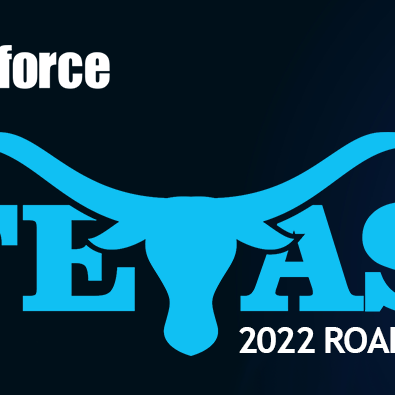A Primer on HAZLOC Certification: Not all Mobile Scenarios Require Intrinsically Safe Devices
Blueforce Tactical and Blueforce BlueBeacon offer mobile teams an unprecedented level of shared situational awareness during lone worker, fire, hazmat, chemical, radiological, and explosives incident responses. While Blueforce manufactures best-in-class mobile software for deployed teams, these teams leverage smart devices upon which Blueforce software executes to take advantage of the fused sensing, location, and information sharing services that Blueforce software provides. While these types of incidents are a relatively small percentage of total responses, it means putting an electrical device into a potentially hazardous environment, hence selecting the right smart device is critical.
While Blueforce is proud to have former first responders and former EOD military folks on staff, we admit that we too get mixed messages about HAZLOC, particularly the finer details. A good starting point is to define some of the markings one might see on a HAZLOC certified sensor and/or smartphone:
- Intrinsically Safe (IS) is a sensor or smartphone that is designed and manufactured to operate on low amperage/voltage where it can’t possibly ignite flammable material. By limiting the power of a device within the defined hazardous area, said equipment can operate safely amid hazardous mixtures of gasses, dust, and metals.
- Explosion Proof (XP)is a sensor or smartphone that is constructed in a housing that can contain a flame or an explosion. This method is used where the ability to reduce electrical circuit energy is not possible. This is the case with smartphones and sensors that require more power to do the job.
If your employees work around hazardous materials, carrying the wrong phone could prove disastrous. Phones from Kyocera, such as the Brigadier, DuraForce, or DuraForce XD will give them peace of mind that their smartphones are certified for protection in hazardous locations where concentrations of flammable gases, vapors or mists are not normally present in an explosive concentration (but may accidentally exist). This is the definition for OSHA’s Hazardous Location certification Non-Incendive, Class I, Division 2, Group A-D, T4.
So what does all of that mean? It’s important to note that not all mobile processes or environments need full IS certification, but let’s examine what each label refers to noting that each is a specific property of the hazardous environment according to the materials and conditions that are encountered. “Class†refers to the basic nature of the hazardous environment according to the type of materials that are present, “Division†refers to the probability of the hazard, and “Group†refers to the specific type of hazardous material present within the hazardous location. Let’s break each one down:
Classes
- Class IÂ refers to Flammable Gases and Vapors.
- Class IIÂ refers to combustible and electrically conductive dusts.
- Class III refers to fibers and flyings such as wood chips. Class III is a singular designation and is not subdivided with groups.
Divisions
- Division 1 refers to the presence of the hazardous material during normal operating conditions and indicates that a hazardous condition is expected to exist all or most of the time.
- Division 2 refers to the presence of hazardous materials under abnormal conditions, such as during container failures, leaks or system failures. In this case, a hazardous condition is not expected to exist at all times and only under unusual conditions where hazardous materials would not normally be exposed to equipment.
Groups
- Group A refers only to Acetylene which has an extremely high explosion pressure.
- Group B refers to Hydrogen, gases with more than 30% hydrogen by volume, butadiene, and other gases with similar explosive properties.
- Group C refers to ether, ethyl, and ethylene gases, and other gases of a similar potential.
- Group D refers to gasoline, acetone, ammonia, benzene, butane, methanol, propane and other more commonly encountered compounds.
Groups C and D make up the majority of compounds encountered within hazardous locations and include petrochemicals and processed gases that are common working materials, products, or byproducts of industrial and commercial manufacturing and refining processes.
“Non-Incendive, Class I, Division 2, Group A-D, T4†is a special certification that qualifies a number of Kyocera’s ruggedized devices for use in hazardous work environments. As the brand known as the market leader in rugged mobile solutions, Kyocera engineers the devices so they are not only rugged and waterproof, but also do not produce arcs, sparks or hot surfaces during their operation. The certification makes the devices well suited to deliver safety, confidence and protection to work crews in industries such as petroleum refineries, and gasoline storage and dispensing areas; dry cleaning plants where vapors from cleaning fluids can be present; spray finishing areas; aircraft hangers and fuel servicing areas; and utility gas plants and operations involving storage and handling of liquefied petroleum gas or natural gas.
While workers in direct contact with certain flammable materials may need devices categorized as “Intrinsically Safe†(also known as Class I, Division 1), these devices are typically far more expensive than Kyocera’s. For those not working in direct contact – e.g., law enforcement, delivery people, on-site security, maintenance or those who would just be performing normal duties – Kyocera’s Class I, Division 2 devices offer the necessary and robust level of protection, full ruggedization and the affordability and convenience of an off-the-shelf solution from the nation’s leading wireless service providers.
For more information about specific environments where Blueforce Tactical and Blueforce BlueBeacon can be used in business and emergency management using Non-Incendive, Class I, Division 2, Group A-D, T4 devices, please send a note to info@blueforcedev.com or call us at 866-960-0204.


